Adding and Managing new Events
Adding a New Event
- In the Data menu, click the Events tab.
The Events screen displays two tabs Manage Incoming Events and Map Events.
The Manage incoming Events tab displays the following buttons:
- Create New: Allows creating new incoming events.
- Inject Event: Allows testing the performance of the event or event enrichment process for internal purposes only. Results indicate success or further steps that can be followed in the case of failure.
- Watch Stream: Allows verifying the event sent from an application has reached Session AI. You can view event logs, event payload, and source details of the events coming into the Session AI platform.
- Search: Allows searching the event from the list of events.
- Click the Create New located on the left corner of the page.
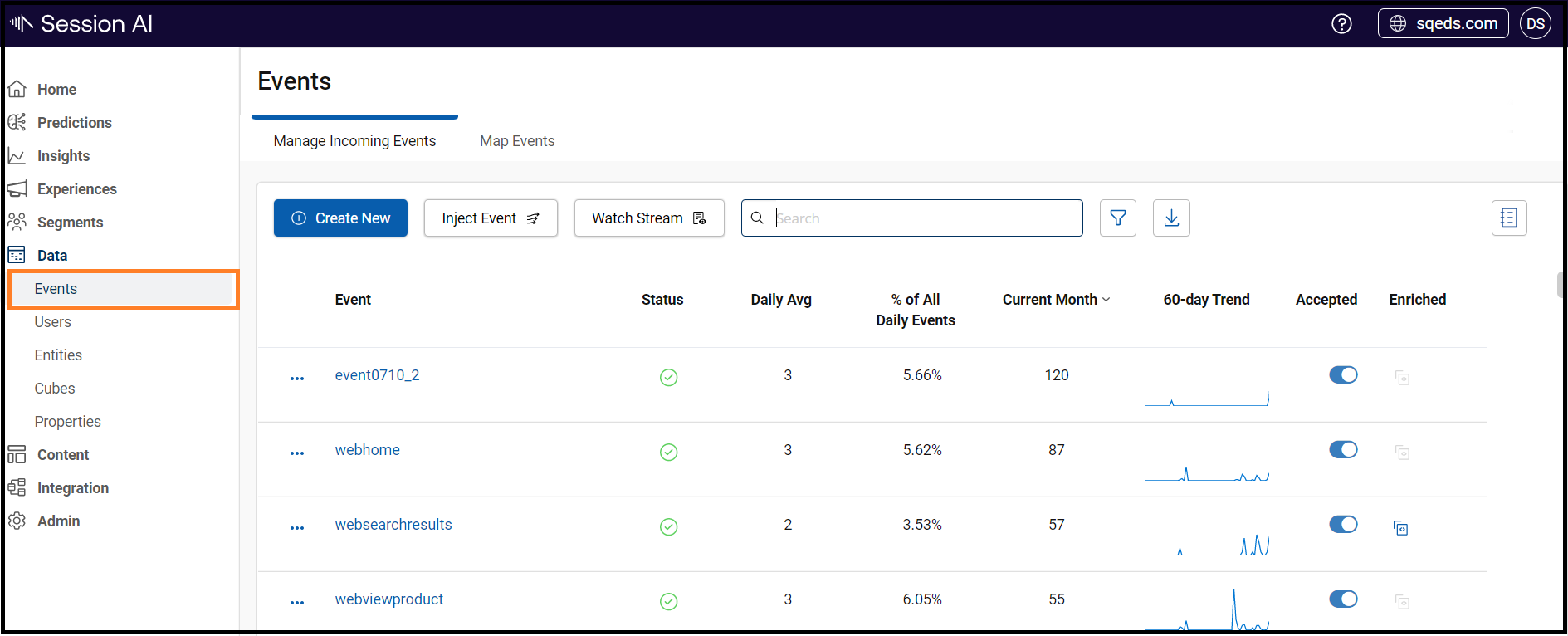
The Event screen with two tabs appears.
- On the Definition screen, enter the following details:
- Unique Name: Enter any unique name that is not used for other events.
- Display Name: Enter the appropriate name that will appear in the list of all events.
- Description: Enter the appropriate event description.
- Event Sources: Select the source channel of the event. For example, Desktop Web, Native App Android, etc. By default, the value is set to "Any".
- Provide a Parameter Name: Enter the appropriate parameter name and click the Add Parameter button. Repeat this step to add more parameters to the event.
- Click Save.
The newly added incoming event appears in the list of all the incoming events.

Note: Enrichment tab will be disabled until the event is created and saved.
Managing an Existing Event
- In the Data menu, click the Events tab.
The Events screen displays Manage Incoming Events tab:
- Context menu: Allows to Edit event, Accept/Ignore event, View 60-day Trend Chart, Audit Trail, , and Delete event.
- Event: Displays the name of all the added incoming events that exist in your logged-in namespace. Click the name of the event, and the Enrichment page of that event will display.
- Status: Displays the status of the events.
- Daily Avg: Daily average count of the event for 60 days
- % of All Daily Events: Displays the percentage for the Daily Avg of the event over the total of all daily avg of events.
- Current Month: Displays the total number of times a particular event occurred in a month.
- 60-day Trend: Displays the frequency report and checks the live details of the number of occurring events per second for the last 60 days.
Note: Click the graph to view the entire graph on a bigger screen. - Accept: Enable to receive the incoming events.
- Enrichment: Allows to add desired code for processing event data.

Testing Events
The Session AI platform provides an emulation functionality for tracing and logging the events and Push simulation processes. These functionalities are described below:
Inject Event
- In the Data menu, click the Events.
The Events screen displays the Manage Incoming Events tab. - To trace the event, click Inject Event.
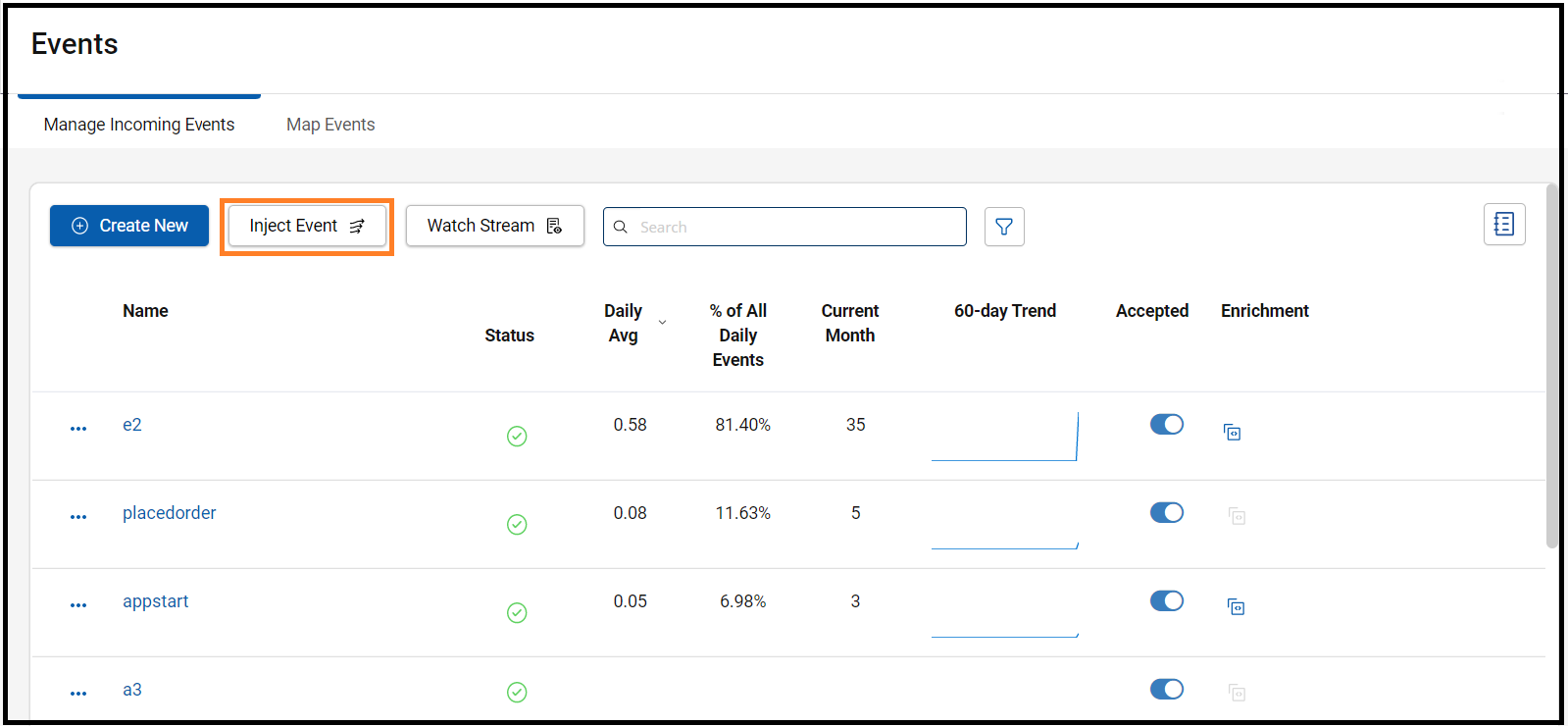
Inject Events pop up.
- Enter the following details:
- Event: Enter or select the desired event name from the list, which you want to trace.
- User Type: Select the user type from the drop-down list.
- Parameters: Enter the appropriate values for the parameters in e.g., key1=value1|key2=value2| ... format.
- Event Source: Select the appropriate source option for an event.
- Click Inject.
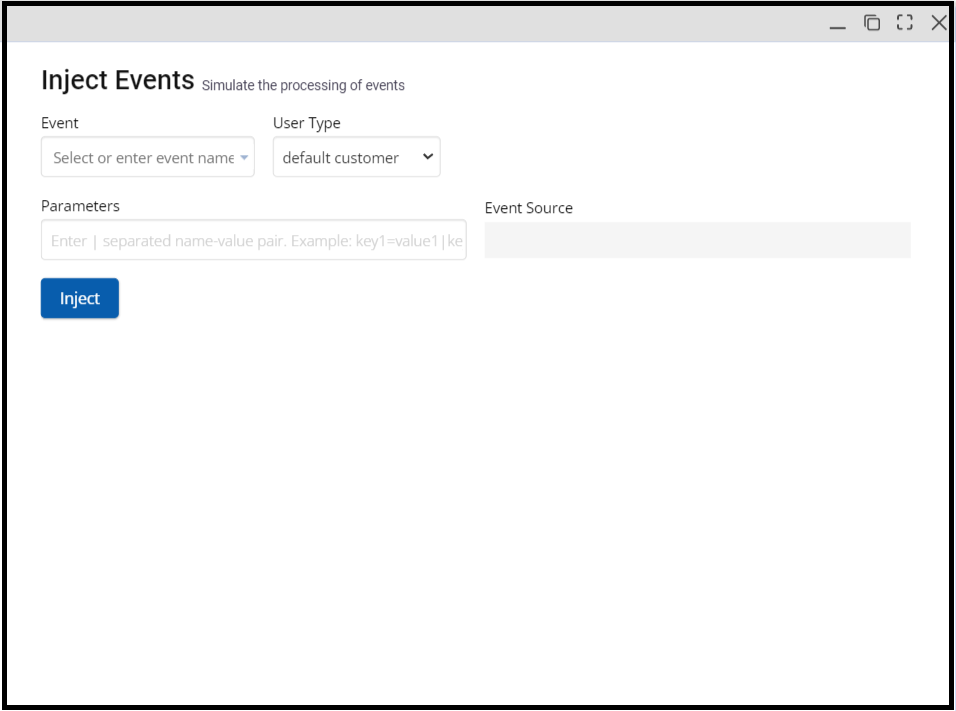
The event processing details appear with the evaluation of content attributes, segments, triggers, and interactions, event processing status, and further steps that can be followed in case of failures.
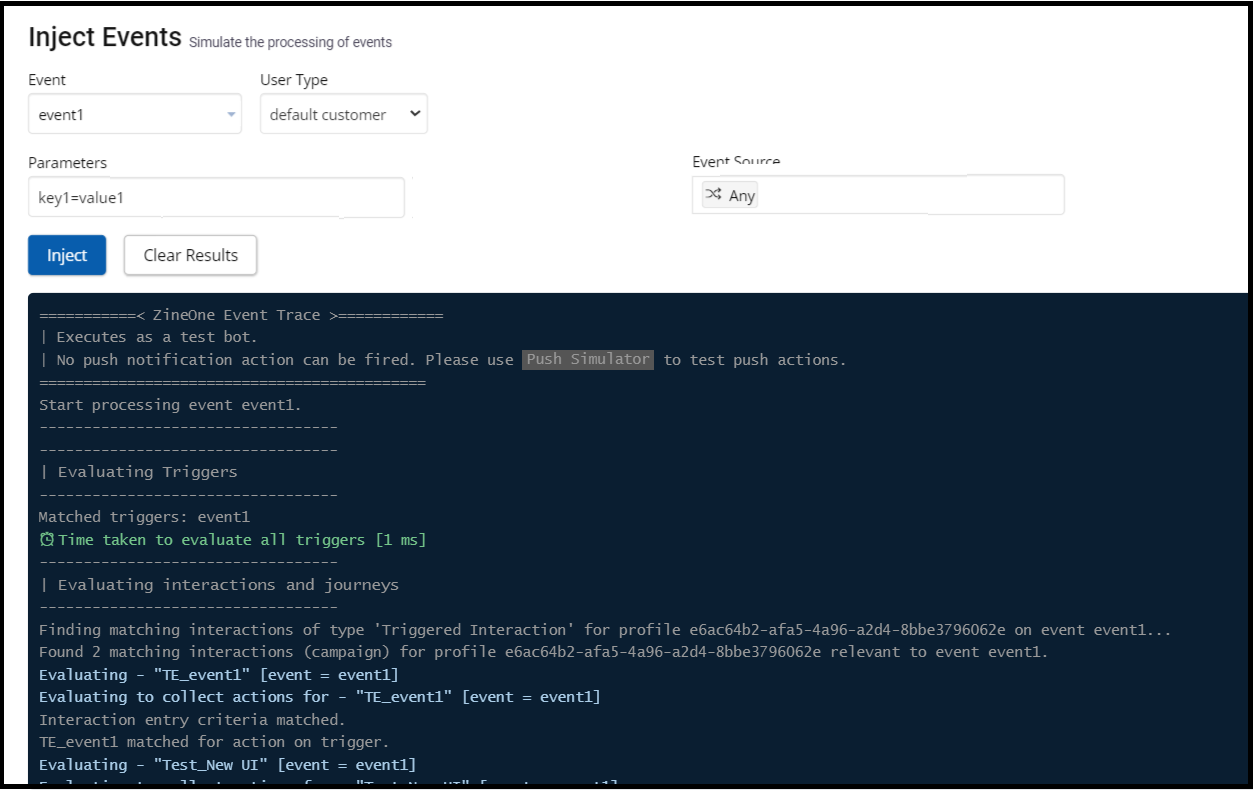
Watch Stream
- In the Data menu, click the Events.
The Events screen displays the Manage Incoming Events tab. - To view the event log details, click Watch Stream.
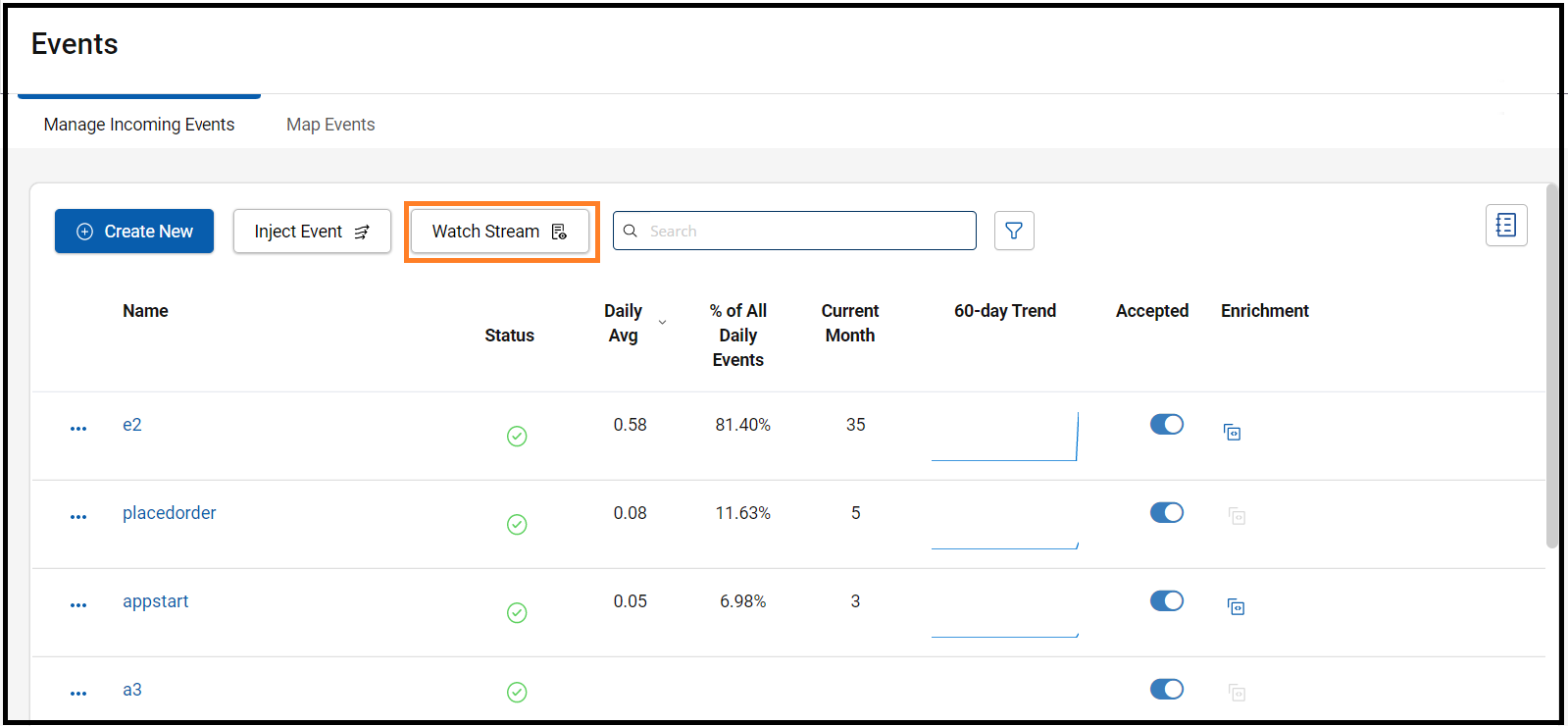
Watch Event Stream screen appears.
- On the Watch Event Stream screen, perform the following:
- Filter Type: Select the desired option from the drop-down list such as Even name, Profile Id, Device Id, and API Key.
- Filter By: Enter the appropriate details based on the filter selection.
- Click Run to start the event logging process.
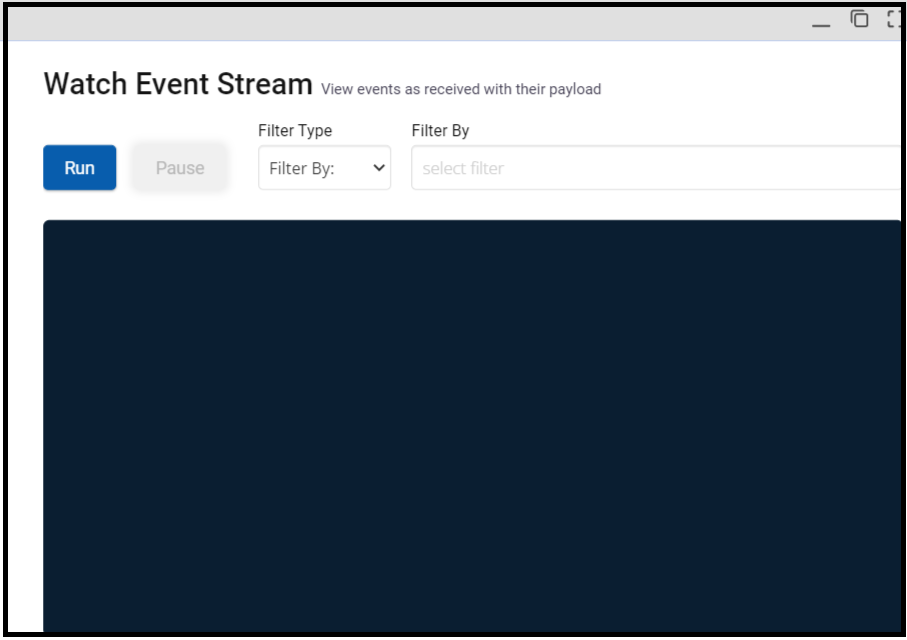
The event log details appear on the screen.
- Click Pause to stop the event logging process.
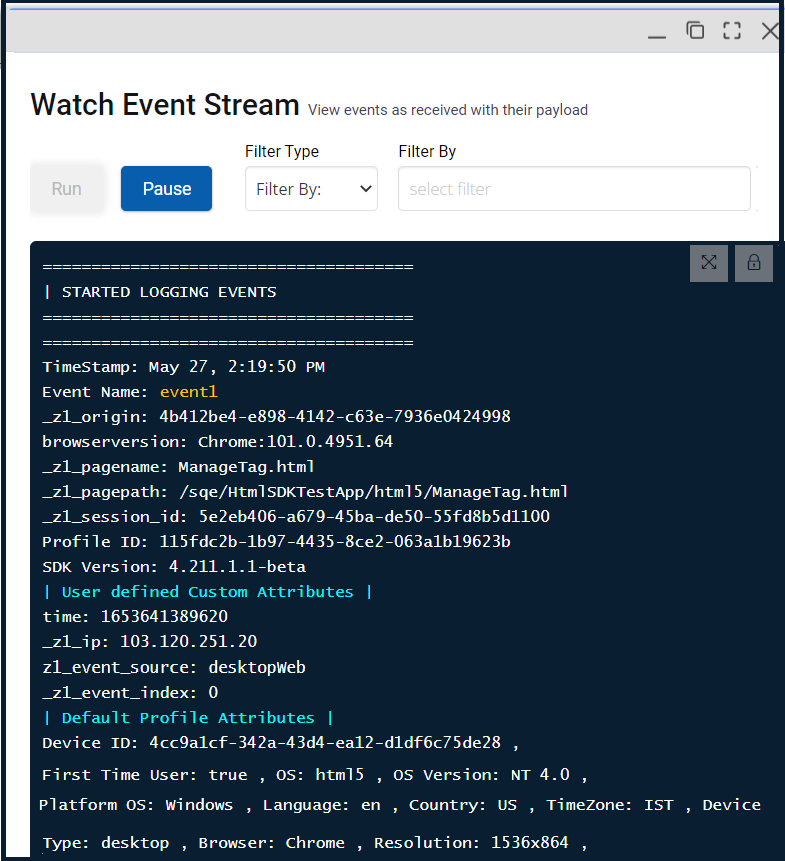
Updated 8 months ago